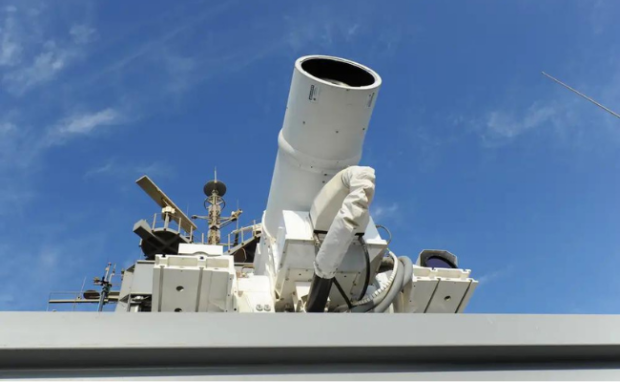China tests the world’s most powerful Gauss cannon
The Chinese People’s Liberation Army Navy recently tested the world’s most powerful Gauss cannon. South China Morning Post reports the electromagnetic launcher accelerated a 124-kg projectile to 700 kph in less than 0.05 seconds. In contrast, Interesting Engineering says regular artillery shells usually travel at roughly 2,237 mph or 1,000 m/s.
That might not be ready as a viable military weapon, but further research and development could make that possible. Moreover, refining this technology could expand its applications, such as space launches. Perhaps we could use it to send satellites into space, reducing the need for rocket propulsion systems. Regardless, Gauss guns are an interesting scientific concept.
This article will discuss how the world’s most powerful Gauss cannon works. Later, I will cover more military innovations from other countries.
How does the Gauss cannon work?

Photo Credit: interestingengineering.com
A Gauss gun fires projectiles using electromagnetism. Collegedunia says Norwegian scientist Kristian Birkeland invented the first at the University of Oslo in 1845. Here’s how you can make a safe one at home:
- Arrange three steel balls and a magnet in an exposed metal tube. The three balls must be ahead of the magnet.
- Then, roll another steel ball onto the other side of the magnet. The former will accelerate as the magnet attracts it.
- The impact will push the ball on the other end with roughly the same force and speed.
Birkeland’s first iteration accelerated 500-gram projectiles to 50 m/s. However, the Chinese Gauss cannon can fire a significantly heavier object faster because it has a solenoid barrel.
A solenoid is a wire coil that uses electromagnetism to move objects. Creating a gun barrel with that has two purposes. First, it keeps projectiles from touching the barrel’s interior.
The electromagnetism keeps the artillery shell in the middle of the barrel, enabling it to move through it with minimal friction. Second, the solenoid’s force accelerates a projectile further.
Naval University of Engineering Professor Guan Xiaocun says the Gauss cannon has advantages over conventional artillery. Interesting Engineering reported it could have “higher launch speeds, lower launch costs, and shorter preparation times.”
You may also like: Katamari Google game lets you play with search results
Guan and his colleagues published their findings in the Transactions of China Electrotechnical Society. Interesting Engineering translated the following statement from the journal:
“It has the potential for revolutionary breakthroughs in speed, range, power, accuracy, safety, flexibility, and reliability. It is widely applicable in areas such as weapon systems, near-earth satellites, and high-speed missile launches.”
SCMP reports the Chinese military’s electromagnetic launch program has also invested in a larger coil cannon. However, that improved version is still in its testing phase.
What are the other recent military projects?

Photo Credit: businessinsider.com
China has been turning other sci-fi weapons into reality. For example, it announced three weeks ago it created a cooling system for laser weapons, letting them fire nonstop.
On August 4, 2023, Yuan Shengfu and the National University of Defense Technology scientists published their findings on Acta Optica Sinica. The cooling system “limited vibration and turbulence and enhanced mirror cleaning through improved structures and optimal gas flow.”
Shengfu’s other research calls it “film cooling.” It reduces a laser weapon’s temperature by coating it with helium. As a result, laser beam launchers can avoid overheating.
Former British military official Steve Weaver says this discovery could give China a significant edge against the US. “If [Chinese scientists] have overcome the heating and distortion issues as claimed, in a (relatively) small enough unit for deployment. This is a big breakthrough considering the US failures in this area.”
You may also like: Israel uses AI for military operations
Meanwhile, the United States is testing a fighter jet with AI integration. Global security and aerospace company Lockheed Martin calls its vehicle VISTA X-62A or Variable In-flight Simulation Test Aircraft.
It mimics the behaviors of existing aircraft like the F-16 fighter jet. As a result, researchers can test artificial intelligence systems for these planes without risking them.
Does this mean the US will replace pilots with bots? Lockheed Martin said it will “keep people in control while enabling them to be safer, more effective, and better able to focus on higher-level tasks by empowering them to make more informed decisions quickly.”
Conclusion
China allegedly tested the world’s most powerful Gauss cannon that can fire a 124-kg projectile to 700 kph in less than 0.05 seconds. However, the country hasn’t shared more details about the project at the time of writing.
More militaries are testing new technologies for war, but they can have other applications. For example, the Gauss launcher could become an alternative satellite launch method.
Many of our favorite products and services, like microwavable meals, came from military tech. Learn more about these innovations and other digital trends at Inquirer Tech.